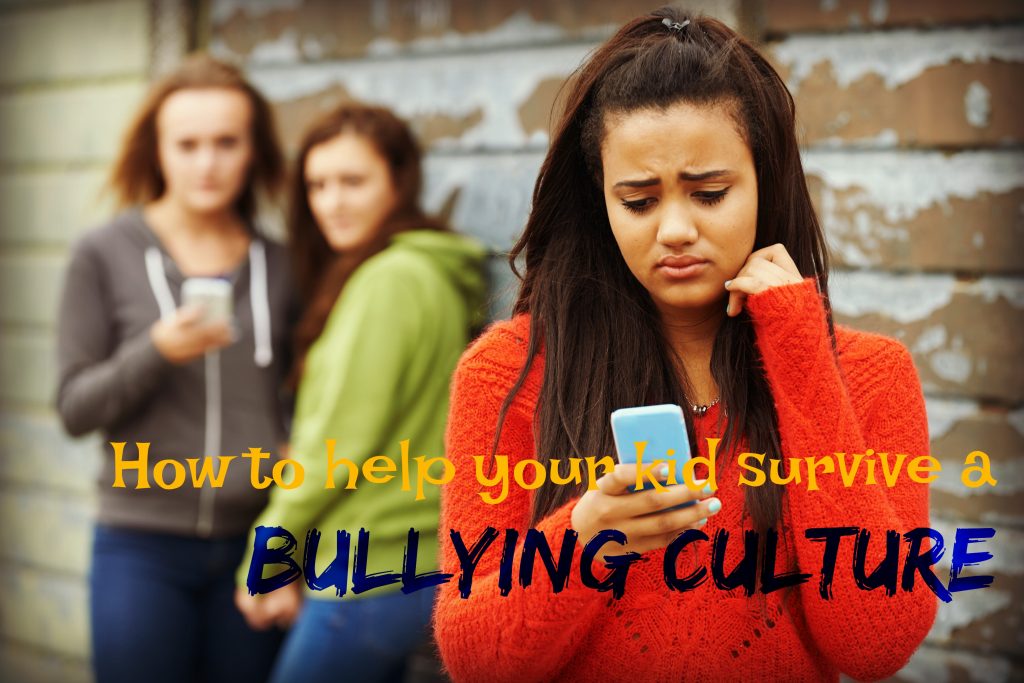Podcast: Play in new window | Download
Subscribe: RSS
Have you ever been bullied? Me too. As I child I often experienced bullying behavior as a white kid in a community turning black. It was during the civil rights movement in the sixties. I was confused because we lived peaceably with our black neighbors.
Later as a teen, the first and only time in my life I was the bully. At the provocation of my friends, I hit a black kid in the back with a stick who was riding his bike in our white neighborhood. While my friends laughed, inwardly I felt ashamed.
I never acted the role of a bully again.
Bullying is a toxin in our society. No longer is it isolated to the playground. Forget the persona of the big kid at school with bigger problems at home who takes it out on others.
Today, bullies are everywhere. Here are few examples:
- Institutions: academic, government, business,
- School – 1 out 5 children experience bullying behavior
- Workplace
- Internet: cyber bullying
- In families: abuse
Bullying is a social epidemic. Within the past year I watched 3 programs that depict the severity of this toxin. I highly recommend you watch these:
Types of Bully Behavior
Kids in school are exposed to bullying 24/7. Bullies act alone or in groups. In a cyber culture it can infect the masses as kids align with power sectors in schools. If you want to fit in, mock the latest target of attack.
Bullying comes is various forms. Here are four common types.
- Verbal
- Physical
- Social/Emotional
- Cyber
Impact of bully behavior on kids and teens
Bullying has a profound negative effect on child and adolescent development. Here are 7 areas it can impact your kid:
- Self-identity/self-esteem harm
- Formation of mental health problems – anxiety, depression, panic disorder, PTSD, suicidality
- Social development
- Academic development
- Health problems – chronic stress, somatic symptoms
- School avoidance
- Family disturbance
How to help your kid survive a bullying culture
Let’s take a look at some things you can do to prepare your kid to thrive in school and handle situations when confronted by bullying behavior.Create a safe and respectful culture at home
Does your home contain a bully toxin? Do you tolerate bully behavior? Here are two areas to examine in your home:- Marriage interaction
- Sibling behavior
Build your kid’s self-confidence by promoting healthy social behavior
Teach them basics of healthy social behavior: friendliness, kindness, sharing, supporting, loyalty Teach them the basics of social boundaries:- respecting yourself – setting boundaries
- Being assertive when others push on or cross personal boundaries
- treating others with respect – honoring boundaries
- Repairing offenses
- Choosing friends who respect boundaries too
Monitor your kid’s acclamation to the school environment
Pay attention to their mood and behavior when they come home from school. Notice any change over time? Pay attention to patterns:- Moodiness
- Withdrawn
- Irritability
- Isolation
- Acting out on others
- Physical signs – bruises, marks, cuts, etc…
Step in and begin a dialogue with your kid
Be calm and do not over-react. Keep your emotions in check. Speak with a tone of curiosity not inquisition. Describe the pattern you’re observing and do a check-in about adjustment to school. You want to convey:- A non-threatening, non-judgmental, nor over-reactive posture
- An intent to understand
- Not take matters into your own hands, but work as a team to solve the problem
- Remain calm, keep emotions in check, and listen
- Convey and understanding and validate emotions
- Ask curiosity questions to get as much detail as possible (you want to document the incident(s))
- Reassure them they did the right thing disclosing the bullying and that you are proud of their courage
Collaborate with your kid on problem-solving solutions to deal with the bullying behavior
- Promote and reinforce concepts of self-respect and setting boundaries that ensure well-being and safety.
- Help them understand in an age-appropriate manner the basic elements of power being displayed.
- Bully power is about control.
- Respectful power is about co-existing.
- Reinforce the importance of not giving away power to someone trying to control you.
- Discuss ways your kid can express respectful power by using an assertive voice to confront bully behavior.
- Disarming the power responses. (See quick scripts below)
- Confident eye contact with the bully.
- Holding your position.
- Walking away.
- Consider the power of a friend to silently stand by your kid’s side when they confront a bully.
- If pattern continues involve teachers or other school administrators.
- Encourage your child to talk to the teacher
- Have a meeting with the teacher
- Inquire about the school bullying policy
- Support groups, school campaigns, etc..
- School social worker
- Discover what your state’s policy and laws state to protect people from bullying
- Discuss options for choosing new friends or social groups to join.

